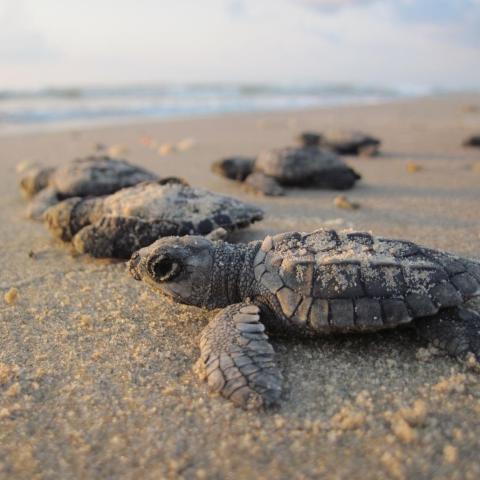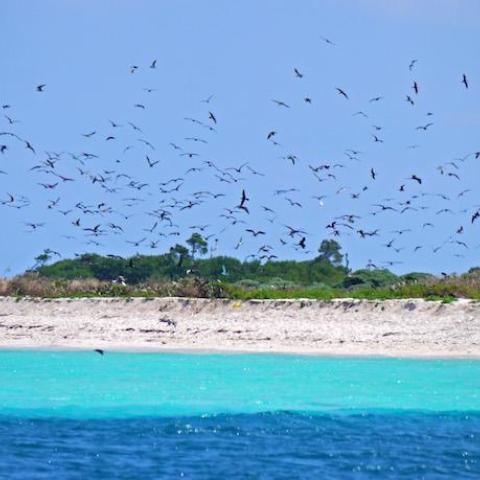
The southside closure of the moat wall will take place first, followed by a closure of the north side/NPS graphic
For anyone heading to Dry Tortugas National Park in Florida in the coming months, know that portions of the moat around Fort Jefferson will be closed to snorkeling as repairs to sections damaged by hurricanes are made.
The temporary closures will be in place through June. During this time, parts of the moat wall will be under construction while corals are removed and relocated in advance of the planned restoration work to the counterscarp that was damaged by hurricanes. Both North and South Beaches will remain open for wading and sunbathing throughout the project. Although the closed areas will change, part of the moat wall will remain open throughout for snorkeling in the water and walking on the path.
The work is to repair sections of the counterscarp that surrounds the 19th century fort. This massive, enclosed hexagonal structure built from 16 million bricks became one of the most geographically desirable military structures in America’s arsenal, along with becoming the largest structure built from brick in the Western Hemisphere. Named after the third president of the United States, Thomas Jefferson, the fort at the height of its occupation had as many as 2,000 military personnel and civilians who called it home. With blacksmiths, cooks, a doctor, and others with specialized skills, the fort functioned almost like a miniature city.
Hurricanes Irma (20170 and Ian (2022) damaged sections of the counterscarp.
Before the work can begin, though, hundreds of corals within the project area need to be moved so they won't be damaged or destroyed. The project area is within the range of seven threatened coral species, and within designated critical habitat for elkhorn and staghorn corals.
“This project truly models the National Park Service’s mission of caring for both natural and cultural features of a park,” said Pedro Ramos, superintendent of Everglades and Dry Tortugas national parks. “Our goal is to preserve the removed corals and ensure they continue to flourish, while preparing the site for restoration of the historic moat wall.”
Not all corals will be removed from the length of the moat wall. The majority of removed corals will be relocated within the park to Long and Bird Key reefs. These areas, selected for their similarity to the conditions found on the moat wall, will become their new permanent home. A small percentage of corals will be sent to research facilities to assist with coral disease response and restoration initiatives, in collaboration with Florida’s Reef partners.
Members of the park’s Coral Team, along with support from the National Park Service’s National Maintenance Dive Team, will use hand tools as well as mechanical equipment to carefully remove the corals from the sections of the moat wall. Because of the equipment, personnel, and boat activity, the closed area should be viewed as an active construction zone.
For the safety of visitors and park personnel, visitors should observe the closures, which will be marked in the water with swim lanes. Swimming and snorkeling are permitted from the beaches up to the closed areas. Snorkelers should not attempt to swim around or beyond the swim lanes.
Updates will be available on the park website, information will be posted in the Dock House, and signs will be posted at the beaches. Only one-half of the snorkel trail and/or moat wall is expected to be closed at any one time.
Other temporary closures include the Dinghy Beach and finger piers, which were damaged by Hurricane Ian. Bush Key is also closed seasonally from February through September for bird nesting activity.




 Support Essential Coverage of Essential Places
Support Essential Coverage of Essential Places






